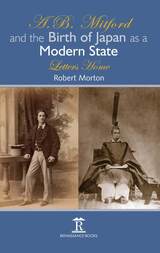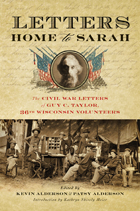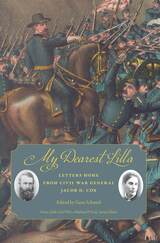3 books about Letters Home

A.B. Mitford and the Birth of Japan as a Modern State
Letters Home
Robert Morton
Amsterdam University Press, 2017
Mitford (later to become the first Lord Redesdale) was an urbane aristocrat, had charm, looks and excellent manners. He was always in the right place at the right time, almost drowned, could have burned to death, was shot at, and was nearly cut down by samurai swords. But 'Bertie', as he was known, was never fazed by events. He stood face-to-face with the new, teenage Emperor when almost everybody else, including the Shogun, could only talk to him behind a screen. He became friendly with the last Shogun and witnessed a hara-kiri, his atmospheric account of which is now a classic. An accomplished linguist and writer, Mitford was the outstanding chronicler of the Meiji Restoration, complementing the writings of his contemporary Ernest Satow. This book will be of particular interest to students and readers of Japanese history, as well as readers of nineteenth-century biography in general. It will also have special appeal to those who are familiar with the Mitford family history.
[more]

Letters Home to Sarah
The Civil War Letters of Guy C. Taylor, Thirty-Sixth Wisconsin Volunteers
Guy C. Taylor; Edited by Kevin L. Alderson and Patsy Alderson; Introduction by Kathryn Shively Meier
University of Wisconsin Press, 2012
Forgotten for more than a century in an old cardboard box, these are the letters of Guy Carlton Taylor, a farmer who served in the Thirty-Sixth Wisconsin Volunteer Infantry Regiment in the American Civil War. From March 23, 1864, to July 14, 1865, Taylor wrote 165 letters home to his wife Sarah and their son Charley.
From the initial mustering and training of his regiment at Camp Randall in Wisconsin, through the siege of Petersburg in Virginia, General Lee’s surrender at Appomattox, and the postwar Grand Review of the Armies parade in Washington, D.C., Taylor conveys in vivid detail his own experiences and emotions and shows himself a keen observer of all that is passing around him. While at war, he contracts measles, pneumonia, and malaria, and he writes about the hospitals, treatments, and sanitary conditions that he and his comrades endured during the war. Amidst the descriptions of soldiering, Taylor’s letters to Sarah are threaded with the concerns of a young married couple separated by war but still coping together with childrearing and financial matters. The letters show, too, Taylor’s transformation from a lonely and somewhat disgruntled infantryman to a thoughtful commentator on the greater ideals of the war.
This remarkable trove of letters, which had been left in the attic of Taylor’s former home in Cashton, Wisconsin, was discovered by local historian Kevin Alderson at a household auction. Recognizing them for the treasure they are, Alderson bought the letters and, aided by his wife Patsy, painstakingly transcribed the letters and researched Taylor’s story in Wisconsin and at historical sites of the Civil War. The Aldersons’ preface and notes are augmented by an introduction by Civil War historian Kathryn Shively Meier, and the book includes photographs, maps, and illustrations related to Guy Taylor’s life and letters.
From the initial mustering and training of his regiment at Camp Randall in Wisconsin, through the siege of Petersburg in Virginia, General Lee’s surrender at Appomattox, and the postwar Grand Review of the Armies parade in Washington, D.C., Taylor conveys in vivid detail his own experiences and emotions and shows himself a keen observer of all that is passing around him. While at war, he contracts measles, pneumonia, and malaria, and he writes about the hospitals, treatments, and sanitary conditions that he and his comrades endured during the war. Amidst the descriptions of soldiering, Taylor’s letters to Sarah are threaded with the concerns of a young married couple separated by war but still coping together with childrearing and financial matters. The letters show, too, Taylor’s transformation from a lonely and somewhat disgruntled infantryman to a thoughtful commentator on the greater ideals of the war.
This remarkable trove of letters, which had been left in the attic of Taylor’s former home in Cashton, Wisconsin, was discovered by local historian Kevin Alderson at a household auction. Recognizing them for the treasure they are, Alderson bought the letters and, aided by his wife Patsy, painstakingly transcribed the letters and researched Taylor’s story in Wisconsin and at historical sites of the Civil War. The Aldersons’ preface and notes are augmented by an introduction by Civil War historian Kathryn Shively Meier, and the book includes photographs, maps, and illustrations related to Guy Taylor’s life and letters.
[more]

My Dearest Lilla
Letters Home from Civil War General Jacob D. Cox
Gene Schmiel
University of Tennessee Press, 2023
Jacob D. Cox experienced more facets of the Civil War than most officers: by land and sea, in both Western and Eastern Theaters, among the inner political circles of Ohio and Washington, DC, in territories hostile and friendly, amidst legal conflicts both civilian and military, and in the last campaigns in Tennessee and North Carolina. The Union general capitalized on his experience by penning his two-volume Military Reminiscences of the Civil War, one of the war’s finest memoirs and arguably the best by a nonprofessional soldier, as well as Atlanta and The Battle of Franklin, both definitive studies for nearly a century. In 2012, Gene Schmiel, Cox’s biographer, learned of a cache in the Oberlin College archives of 213 letters Cox wrote to his wife, Helen, during the war. Schmiel recognized these documents as a ready resource for Cox as he wrote his histories, and many stand as first drafts of Cox’s analyses of the military and sociopolitical events of the day.
Helen Finney Cox (her husband affectionately referred to her as “Lilla”) was a mother of six and the daughter of Oberlin College president Charles Finney. These intimate and insightful wartime letters show both the fondness Cox had for his spouse and his respect for her as an intellectual equal. To Helen, the stoic, introverted statesman revealed—as he did to no one else—his inner thoughts and concerns, presenting observant, lucid, and informative reports and analyses of the war, his changing life, and his ambitions. This collection illustrates the life of a Gilded Age Renaissance man as he made the transition from untested soldier to respected general and statesman.
Helen Finney Cox (her husband affectionately referred to her as “Lilla”) was a mother of six and the daughter of Oberlin College president Charles Finney. These intimate and insightful wartime letters show both the fondness Cox had for his spouse and his respect for her as an intellectual equal. To Helen, the stoic, introverted statesman revealed—as he did to no one else—his inner thoughts and concerns, presenting observant, lucid, and informative reports and analyses of the war, his changing life, and his ambitions. This collection illustrates the life of a Gilded Age Renaissance man as he made the transition from untested soldier to respected general and statesman.
[more]
READERS
Browse our collection.
PUBLISHERS
See BiblioVault's publisher services.
STUDENT SERVICES
Files for college accessibility offices.
UChicago Accessibility Resources
home | accessibility | search | about | contact us
BiblioVault ® 2001 - 2024
The University of Chicago Press









